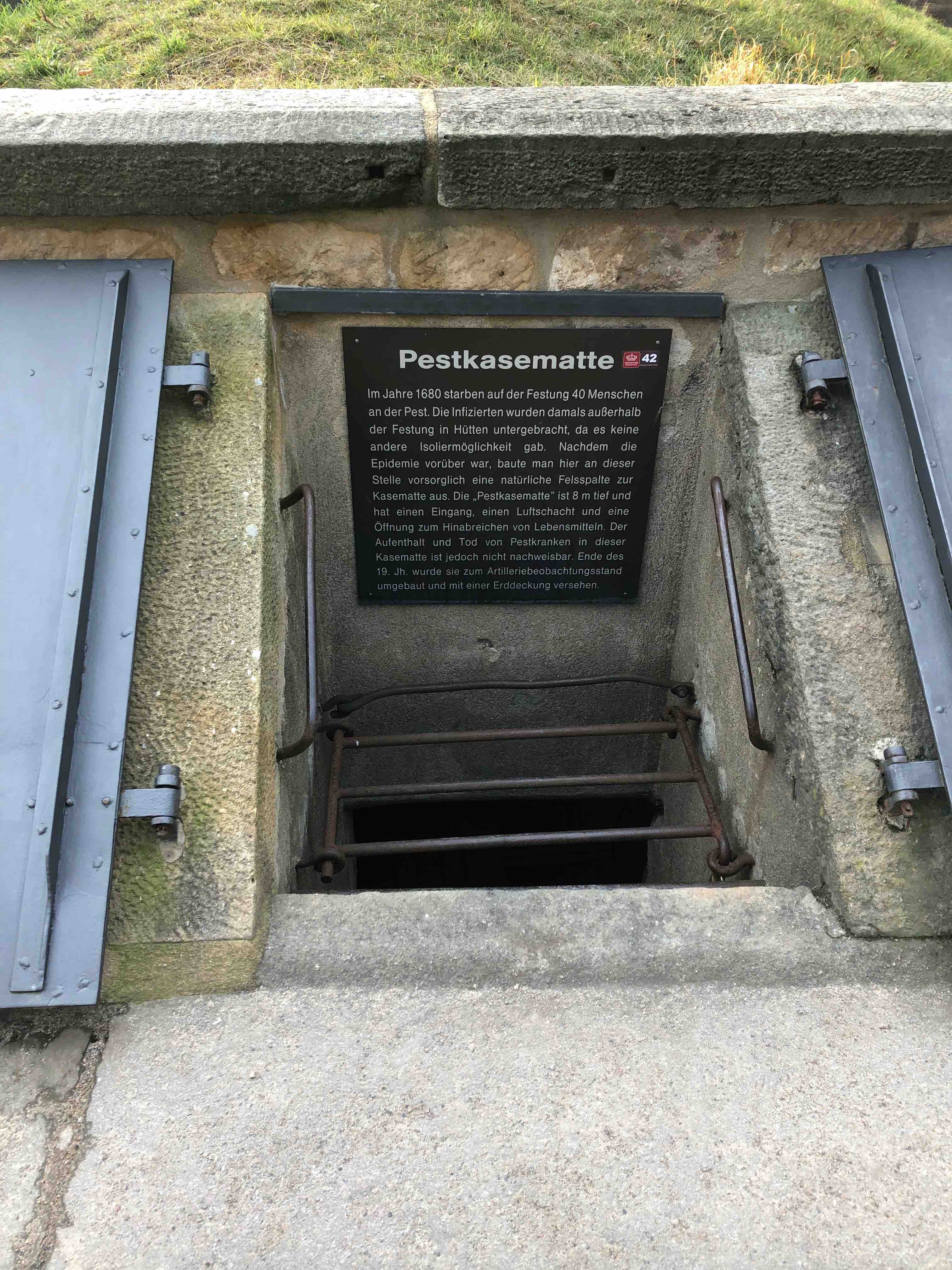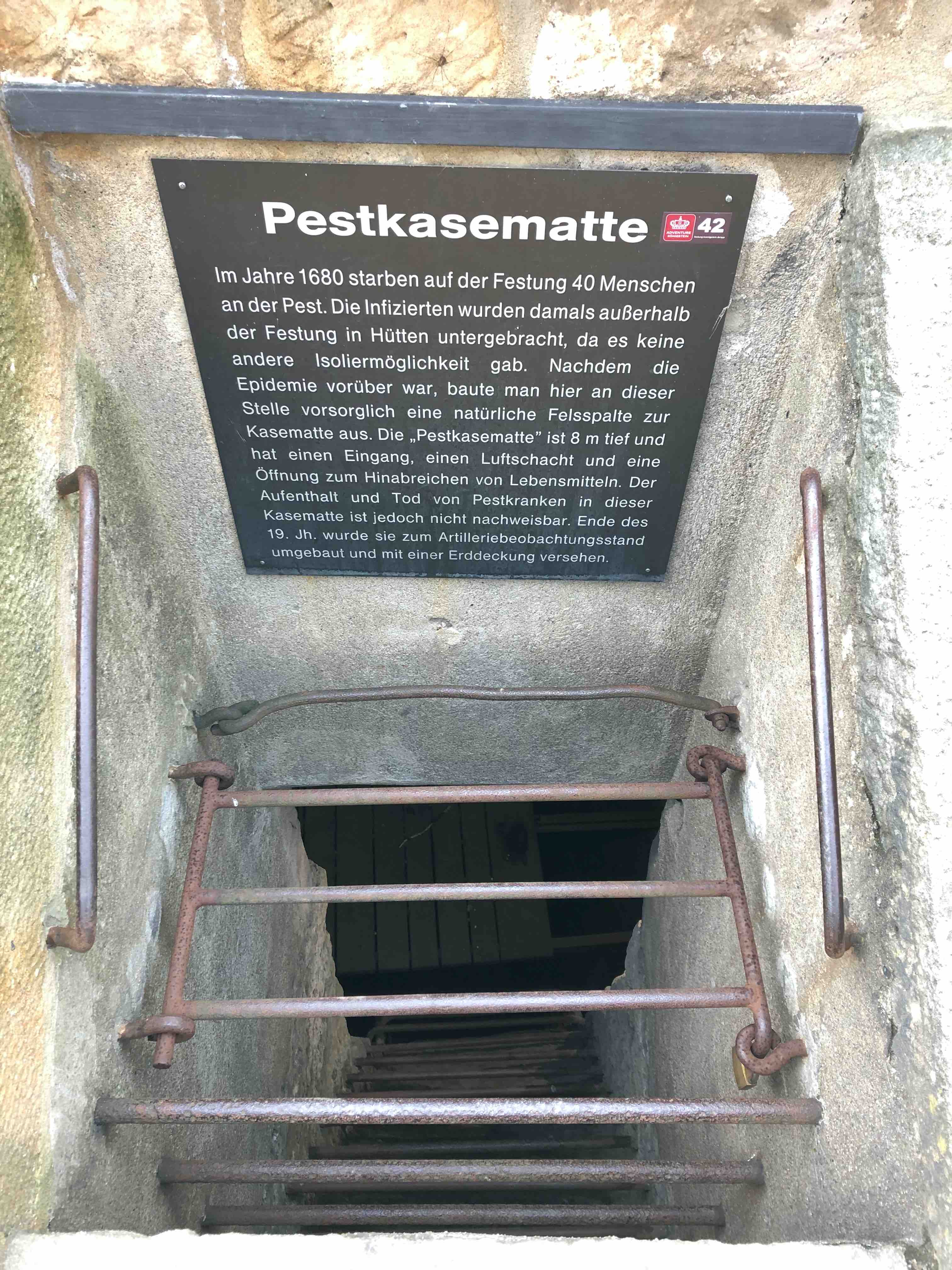Quarantine in the 1600s
It’s been a long six months that we’ve been under quarantine and other disease-limiting measures. It hasn’t been easy, but thanks to something I saw at Königsstein Fortress I’m not complaining. Here’s why:

Königsstein1 Fortress, also known as the Saxon Bastille, overlooks a section of the Elbe river and is located just south of Dresden. This is a little bunker built on top of the fortress. This is what the sign says:
In the year 1680 40 people died of the plague at the fortress. In those times, those infected were placed in huts outside the fortress, since there were no other means of isolation. After the epidemic was over, this casemate2 was built as a precautionary measure in a natural fissure in the cliff. The “plague casemate” is 8 meters3 deep and has an entrance, an air shaft, and an opening for lowering in food. We don’t have any evidence of people staying and dying of the plague in here, however. At the end of the 19th century this was repurposed as an artillery observations stand and was covered with a layer of earth.
I’m pretty sure they didn’t have good enough WiFi in there to watch Netflix.
Here’s a look deeper into the pit:

I’m encouraged by the increase in mask-wearing that I’ve seen in the past few weeks, and I’m deeply grateful for all the medical workers and “essential” laborers working in grocery stores, as part of the supply chain, etc. As a thank you, I’m working from home and doing my best to limit my contact with the outside world. I’m grateful that I can work from home and that my wife and I have plenty here at home to do. It’s a real blessing, and I get that many people don’t have that luxury.
If you’re staying home too but feel exhausted, just remember: at least you’re not locked in a cold stone box without any WiFi.